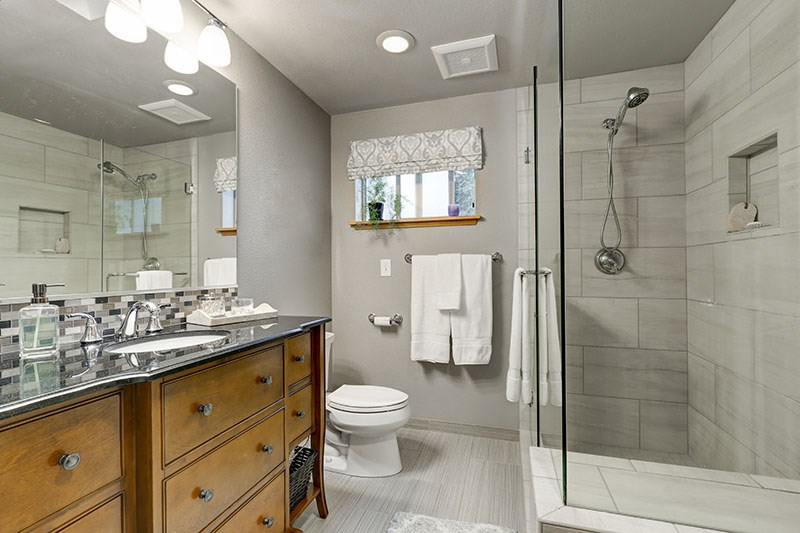Key Takeaways:
- Tub-to-shower conversions provide Tub-to-Shower Conversion modern, spacious, and efficient bathroom solutions.
- Shower conversions offer significant water savings and increased safety features.
- Design flexibility allows homeowners to create personalized bath spaces.
- The conversion process can increase property value and provide long-term savings.
Table of Contents:
- Introduction
- Modernizing Your Bathroom
- Promoting Water Conservation
- Enhanced Safety Features
- Design Flexibility and Customization
- Cost Benefits and Property Value
- Understanding the Conversion Process
- Conclusion
Introduction
In an era where home improvement is both a hobby and a necessity, more homeowners Tub-to-Shower Conversion explore ways to update their living spaces for added comfort and style. One of the most sought-after transformations is the conversion of traditional bathtubs into showers. This growing trend not only reflects modern design aesthetics but also addresses the practical needs of contemporary living. A tub-to-shower conversion can revolutionize how your bathroom looks and functions, offering a refreshing blend of convenience and sophistication.
This transformation can enhance the overall functionality of the bathroom, making it more accessible and easier to maintain. For homeowners with limited space or mobility concerns, a shower offers a more efficient use of the area and a safer alternative to stepping over the side of a bathtub. Additionally, the wide variety of design options, from sleek walk-in showers to luxurious rain showerheads, allows homeowners to create a custom look that fits their style. Many find that converting their bathtub to a shower increases the value of their home, appealing to potential buyers who prefer modern and practical bathroom features. With the right design, a tub-to-shower conversion can elevate the bathroom’s aesthetics, making it a more inviting and functional space for everyday use.
Modernizing Your Bathroom
The desire for a streamlined and modern aesthetic in the bathroom has driven many toward tub to shower conversions. This transformation provides a seamless way to incorporate current trends into your bathroom without a complete overhaul. Removing a traditional bathtub opens up the space, making it feel larger and more inviting—a crucial advantage in smaller bathrooms where every inch counts. This change enhances visual appeal and improves functional aspects, offering easy access and faster cleaning due to fewer nooks and crannies for grime buildup.
Showers’ aesthetics are inherently versatile. Showers offer various design options, whether you prefer a rustic charm with natural stone tiles or a sleek modern look with glass enclosures and metallic accents. Customizable showerheads and fixtures, like rainfall and massaging jets, can enhance your experience, allowing each shower a luxurious escape.
Promoting Water Conservation
With environmental consciousness becoming a priority, water conservation has shifted to the forefront of remodeling projects. Showers inherently use less water than baths, promoting sustainable living practices. For homeowners looking to enhance their eco-friendly credentials, installing water-efficient showerheads during a conversion is a strategic move.
Implementing such measures reduces the household’s carbon footprint and results in noticeable savings on water bills over time. This adoption of water-smart habits is not just a trend but an essential part of responsible homeownership in the face of increasing climate challenges and global water shortages.
Enhanced Safety Features
Safety considerations are paramount, especially when designing spaces for use by a broader age range. Traditional bathtubs, with their high sides, can pose a risk of falls, a leading cause of injury in home settings. Converting a bathtub to a shower provides solutions designed with accessibility in mind. Showers can be crafted with low or no-threshold entries, making them safer for everyone, particularly seniors and children.
Features like grab bars, non-slip floor tiles, and built-in seats can significantly enhance safety. These elements provide stability for those who need extra support, while adjustable showerheads cater to different user needs, making the showering experience safer, more enjoyable, and more adaptable.
If you’re looking to update your bathroom, a tub-to-shower conversion can be an excellent way to refresh your space. This transformation not only increases the functionality of your bathroom but also enhances its modern appeal. For more on how to make this change, consider consulting with professionals who specialize in home plumbing solutions.
Design Flexibility and Customization
One of the standout benefits of tub-to-shower conversions is their unparalleled design flexibility. Unlike standard tubs, showers can be customized to meet specific needs and aesthetic desires. Whether homeowners aim for a minimalist, space-saving design or a lavish, spa-like setup, showers provide the framework for creating personalized sanctuaries.
The choice of materials—from sleek ceramics to luxurious marble—allows for creative expression while maintaining functionality. Moreover, integrating modern amenities like steam showers or innovative shower systems can elevate the bathroom experience, turning a daily routine into a rejuvenating ritual. These customizations reflect personal taste and add significant value to the home, appealing to current trends in personalized home design.
In addition to transforming your bathroom with a tub-to-shower conversion, consider enhancing your home’s comfort by addressing other essential areas. For instance, ensuring your air conditioning system is in top shape can significantly improve your living environment. If you’re experiencing issues with your cooling system, seeking professional Air Conditioning Repair Austin can help maintain a comfortable temperature throughout your home. This holistic approach to home improvement not only elevates your space aesthetically but also ensures functionality and comfort, making your home a true sanctuary. By focusing on both bathroom upgrades and essential home systems, you create a more enjoyable and efficient living space.
Cost Benefits and Property Value
The initial cost of a tub-to-shower conversion may vary based on design choices and installation specifics, but the financial advantages make it a worthwhile investment. Reducing water usage directly translates to lower utility bills, offering substantial savings over time. Additionally, showers require less maintenance than bathtubs, often resulting in lower long-term expenses related to cleaning and repairs.
Furthermore, a well-executed shower conversion can increase a home’s market appeal and resale value. As modern buyers increasingly prioritize updated bathrooms, having a stylish, efficient shower can be a strong selling point. Homes with remodeled, contemporary bathrooms often attract higher bids, proving this investment yields aesthetic and financial dividends.
Understanding the Conversion Process
Understanding the conversion process is crucial for homeowners considering this option. Initially, evaluating your existing bathroom space and setting a clear vision for your new shower’s design is essential. Decisions regarding the choice of tiles, the type of showerhead, and additional features like seating should align with your budget and lifestyle needs.
Hiring an experienced contractor can ensure a smooth transition from concept to completion. Professionals can help navigate necessary plumbing changes and handle potential challenges arising during the renovation, providing a timely and quality finish. Clear communication helps manage expectations and culminate in a bathroom that meets or exceeds your aspirations.A tub-to-shower conversion is a great way to refresh your bathroom and improve its functionality, especially for those looking to create a modern, accessible space. Pairing this update with other strategic changes can maximize both style and value. For inspiration on transforming your bathroom effectively, explore these 10 bathroom remodel ideas that incorporate high-impact upgrades tailored to enhance both aesthetics and practicality.
Conclusion
In conclusion, converting a tub into a shower is a transformative update incorporating modern design, efficiency, and safety into an essential home space. The shift caters to evolving lifestyle needs and promotes environmental responsibility through reduced water usage. With the flexibility to tailor designs and the potential to boost property value significantly, tub-to-shower conversions stand out as a strategic investment in both quality of living and financial return. As homeowners continue to seek ways to enhance their spaces, this conversion remains a relevant and rewarding choice.Transforming your bathroom with a tub-to-shower conversion not only enhances the aesthetic appeal but also improves functionality, making it a popular choice for modern homeowners. This upgrade can significantly increase the value of your home while providing a more accessible and convenient bathing experience. If you’re considering this renovation, it’s essential to work with experienced professionals who can ensure a seamless transition. For expert guidance and reliable plumbing services, you might want to check out here. With the right team, you can achieve a stylish and efficient bathroom space that meets your needs and preferences, turning your vision into reality.

